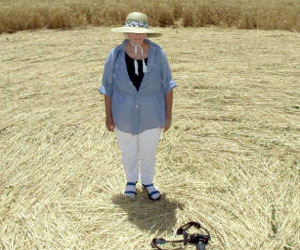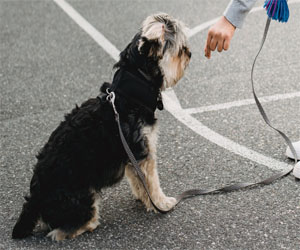



Dogs go through various stages of development as they grow from curious puppies into mature adults. Understanding these stages is essential for responsible pet ownership and can help you provide the right care and training at each phase. In this article, we will explore the key stages of canine development.
Stage 1: Neonatal Stage (0-2 Weeks)
The neonatal stage begins from birth and lasts for the first two weeks of a puppy's life. During this time, puppies are entirely dependent on their mother and littermates. They are born blind, deaf, and unable to regulate their body temperature. Their primary activities include nursing, sleeping, and staying close to their mother for warmth and nourishment.
Stage 2: Transitional Stage (2-4 Weeks)
The transitional stage marks the period from two to four weeks of age. Puppies start to experience significant development during this time. They begin to open their eyes, hear, and gain some control over their movements. Socialization with their littermates and mother is crucial for learning important social and communication skills.
Stage 3: Socialization Stage (3-14 Weeks)
The socialization stage is a critical period that usually spans from 3 to 14 weeks. During this time, puppies are highly impressionable. They become more curious and open to new experiences. It's an ideal time to expose them to various people, animals, environments, and situations. Proper socialization can help prevent fear and aggression issues later in life.
Stage 4: Juvenile Stage (3-6 Months)
The juvenile stage occurs from three to six months of age. Puppies go through rapid growth and development during this period. They may experience teething, increased energy levels, and a stronger desire to explore their surroundings. Obedience training should begin during this phase to instill basic commands and good manners.
Stage 5: Adolescent Stage (6-18 Months)
The adolescent stage spans from six to 18 months. This stage is characterized by the dog's transition into sexual maturity. Behavioral changes and challenges can emerge, including increased independence, the testing of boundaries, and sometimes a resurgence of puppy-like behavior. It's essential to maintain consistent training and provide appropriate outlets for their energy.
Stage 6: Early Adulthood (1-3 Years)
Early adulthood typically starts around one year of age and continues until around three years. Dogs become physically and mentally mature, and their behavior stabilizes. They are more capable of advanced training and can participate in various activities, such as agility or advanced obedience training.
Stage 7: Adulthood (3+ Years)
Adulthood in dogs generally begins around three years of age, but the timeline can vary by breed and size. During this stage, dogs are considered fully mature. They maintain their physical and mental abilities but may start to slow down with age. It's crucial to continue regular veterinary care and adjust exercise and dietary needs to meet their changing requirements.
Understanding the stages of canine development is essential for providing proper care and training throughout a dog's life. Each stage comes with its unique challenges and opportunities for growth. By recognizing these stages and tailoring your approach to your dog's specific needs, you can foster a happy and well-adjusted canine companion at every phase of their development.
Techniques For Awareness In Dreams
 Keep A Dream Journal: A dream journal is a crucial tool for developing lucid dreaming skills. Keep it by your bedside, and as soon as you wake up, jot down the details of your dreams. This practice enhances your dream recall, helping you identify recurring themes and symbols.
Keep A Dream Journal: A dream journal is a crucial tool for developing lucid dreaming skills. Keep it by your bedside, and as soon as you wake up, jot down the details of your dreams. This practice enhances your dream recall, helping you identify recurring themes and symbols.
Mnemonic Induction Of Lucid Dreams (MILD): The MILD technique involves setting a strong intention to remember your dreams and become lucid. Before falling asleep, repeat a mantra or affirmation to yourself, such as "I will become aware that I'm dreaming." The key is to truly believe in the intention.
Wake-Back-To-Bed (WBTB): The WBTB technique involves waking up in the middle of the night and then going back to sleep with the intention of becoming lucid. By disrupting your sleep cycle and returning to slumber, you increase the chances of entering a dream directly into a state of awareness.
Visualizations: Visualization techniques involve imagining yourself in a lucid dream scenario before falling asleep. This helps your subconscious mind prepare for the experience and increases the likelihood of becoming aware during the dream.
Progressive Muscle Relaxation: Relaxation exercises, such as progressive muscle relaxation, can help induce a calm and focused state before sleep. A calm mind and body can make it easier to enter the dream world with awareness.
Wake-Induced Lucid Dream (WILD): WILD is a technique that involves transitioning directly from wakefulness into a lucid dream. It requires concentration and awareness during the transition between wakefulness and sleep, often during a brief waking period in the middle of the night.
Hypnagogic State Exploration: Hypnagogia is the transitional state between wakefulness and sleep. Observing the visual and auditory hallucinations that often occur during this state can lead to lucid dream induction.






A Positive Approach To Obedience And Behavior
 Timing Is Key: Timing is crucial in reward-based training. The reward must be given promptly, typically within seconds of the desired behavior occurring. This ensures that the dog associates the action with the reward.
Timing Is Key: Timing is crucial in reward-based training. The reward must be given promptly, typically within seconds of the desired behavior occurring. This ensures that the dog associates the action with the reward.
Consistency: Consistency is vital in this training method. Everyone in the dog's life, from family members to caregivers, should follow the same rules and use the same commands to avoid confusion.
Clear Communication: Reward-based training requires clear communication between the dog and the trainer. Verbal cues, hand signals, or clickers are used to signal the desired behavior. These cues are followed by a reward when the dog complies.
Benefits Of Reward-Based Dog Training
Promotes Positive Behavior: Reward-based training encourages good behavior and helps dogs understand what is expected of them. It promotes a willingness to please and cooperation.
Strong Bond: This training method fosters a strong bond between the dog and the trainer. Dogs associate training with positive experiences and look forward to working with their owners.
Reduces Stress And Fear: Reward-based training is a gentle approach that minimizes stress and fear in dogs. It doesn't involve harsh punishments or intimidation, making it a less anxiety-inducing experience for your pet.
 Territorial Aggression: Cats are territorial animals, and they may become aggressive when they perceive an intrusion into their space. This type of aggression is often triggered by other cats.
Territorial Aggression: Cats are territorial animals, and they may become aggressive when they perceive an intrusion into their space. This type of aggression is often triggered by other cats.
Play Aggression: Kittens and young cats frequently engage in play aggression, which involves pouncing, biting, and scratching. While it may seem playful, it can escalate if not managed properly.
Redirected Aggression: This occurs when a cat becomes agitated by a stimulus (e.g., another cat outside the window) and then redirects its aggression onto a nearby person or pet.
Pain-Related Aggression: Cats in pain may exhibit aggression as a defensive response. It's essential to rule out any underlying medical issues in cases of sudden aggression.
Understanding The Causes:
To address cat aggression effectively, it's essential to identify the root causes. Common contributing factors include:
Socialization issues during kittenhood.
Lack of mental and physical stimulation.
Sudden changes in the cat's environment.
Presence of other animals in the household.
Undiagnosed medical conditions causing pain or discomfort.
Fear or anxiety due to past traumatic experiences.
 Scientific And Psychological Perspective: From a scientific and psychological standpoint, dream awareness challenges our understanding of consciousness. It showcases that aspects of self-awareness can persist even in states of altered consciousness, like dreaming.
Scientific And Psychological Perspective: From a scientific and psychological standpoint, dream awareness challenges our understanding of consciousness. It showcases that aspects of self-awareness can persist even in states of altered consciousness, like dreaming.
Nightmares And Dream Awareness: In the case of nightmares, dream awareness can be a double-edged sword. While it may lead to the recognition that one is dreaming, it can also intensify the fear and anxiety experienced within the dream. However, this heightened awareness can ultimately help individuals confront and process their fears.
Practical Applications: Dream awareness, especially in the form of lucid dreaming, has practical applications. It can be used to overcome phobias, rehearse important events, and explore creative ideas. Some even use it as a form of entertainment, creating their own vivid adventures.
Spiritual And Metaphysical Interpretations: Various spiritual and metaphysical traditions consider dream awareness as a connection to higher states of consciousness. Some believe that dreams provide insights into the soul, offering guidance, wisdom, and glimpses into the universal collective unconscious.
Self-Exploration And Personal Growth: Dream awareness serves as a valuable tool for self-exploration and personal growth. By analyzing dream narratives, symbols, and emotions, individuals can gain deeper insights into their subconscious, unresolved conflicts, and even receive solutions to waking-life challenges.
Transforming Trash Into Valuable Resources
 2. Biomass-To-Biofuel Conversion
2. Biomass-To-Biofuel Conversion
Biomass, including wood, crop residues, and dedicated energy crops, can be converted into biofuels through various processes such as pyrolysis, gasification, and biochemical conversion. Pyrolysis involves heating biomass in the absence of oxygen to produce bio-oil, which can be further refined into transportation fuels. Gasification converts biomass into a synthesis gas that can be used to produce fuels like ethanol and synthetic diesel. Biochemical conversion uses enzymes and microorganisms to break down biomass into biofuels like ethanol and biodiesel.
3. Plastics-To-Fuel Technologies
Plastics, which are notoriously challenging to recycle, can be transformed into valuable fuels using pyrolysis and depolymerization methods. Pyrolysis breaks down plastics into liquid fuel, gas, and char, which can be used as fuel or chemical feedstocks. Depolymerization processes chemically break down plastics into their constituent monomers, which can then be used to produce new plastics or fuels.
4. Municipal Solid Waste-To-Energy (MSW-To-Energy)
Municipal solid waste (MSW) is a diverse mixture of materials, and waste-to-energy facilities can convert this waste into electricity and heat through incineration or gasification. Incineration burns the waste at high temperatures, producing heat that is used to generate electricity. Gasification converts MSW into a synthesis gas that can be used for electricity generation or further refined into transportation fuels.
5. Algae-Based Biofuel Production
Algae-based biofuel production is an emerging waste-to-fuel method that harnesses the rapid growth of algae. Algae can be cultivated in wastewater or on non-arable land, and they capture carbon dioxide during growth. This biomass can be processed to produce biofuels like biodiesel and biogas, providing an eco-friendly solution for waste management and clean energy generation.
Challenges And Considerations
While waste-to-fuel generation methods hold great promise, they are not without challenges. These include technical and economic barriers, ensuring sustainable feedstock supply, and addressing concerns about emissions and environmental impact. Careful planning, innovative technologies, and sound regulations are essential to maximize the benefits of these methods while mitigating potential drawbacks.